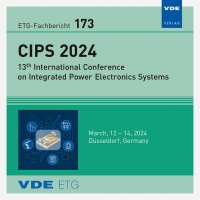Sulphide dendrite growth in semiconductor power modules: Towards mission profile calculations of temperature, humidity, and H2S concentration dependencies
Konferenz: CIPS 2024 - 13th International Conference on Integrated Power Electronics Systems
12.03.2024-14.03.2024 in Düsseldorf, Germany
Tagungsband: ETG-Fb. 173: CIPS 2024
Seiten: 9Sprache: EnglischTyp: PDF
Autoren:
Wassermann, Tobias N.; Schilling, Oliver (Infineon Technologies AG, Warstein, Germany)
Inhalt:
Acceleration of sulphide dendritic growth in isolation trenches of direct bonded copper substrates (DBC) as used, e.g., in power semiconductor modules, by temperature was investigated on model DBCs to determine the activation energy of the Arrhenius law. Combined with previous investigations on humidity and concentration dependencies and with a mission profile for climatic conditions, and assumed concentration ranges, the lifetime of a power semiconductor module can be calculated. The reduction in effective humidity when inverters warm up in an application overcompensates the temperature acceleration. Exemplary calculations assessing the expected growth rates indicate that a bridging dendrite can be expected under harsh application conditions. However, moderate H2S concentrations, as defined in IEC-60721 for C2 classes, would only lead to moderate dendritic growth rates. Especially, when combined with reduced relative humidity conditions inside the inverter. Such investigations and calculations can further help identify target applications that require specific protection measures, and differentiate from those where no failure of power modules is to be expected even without advanced protection.


